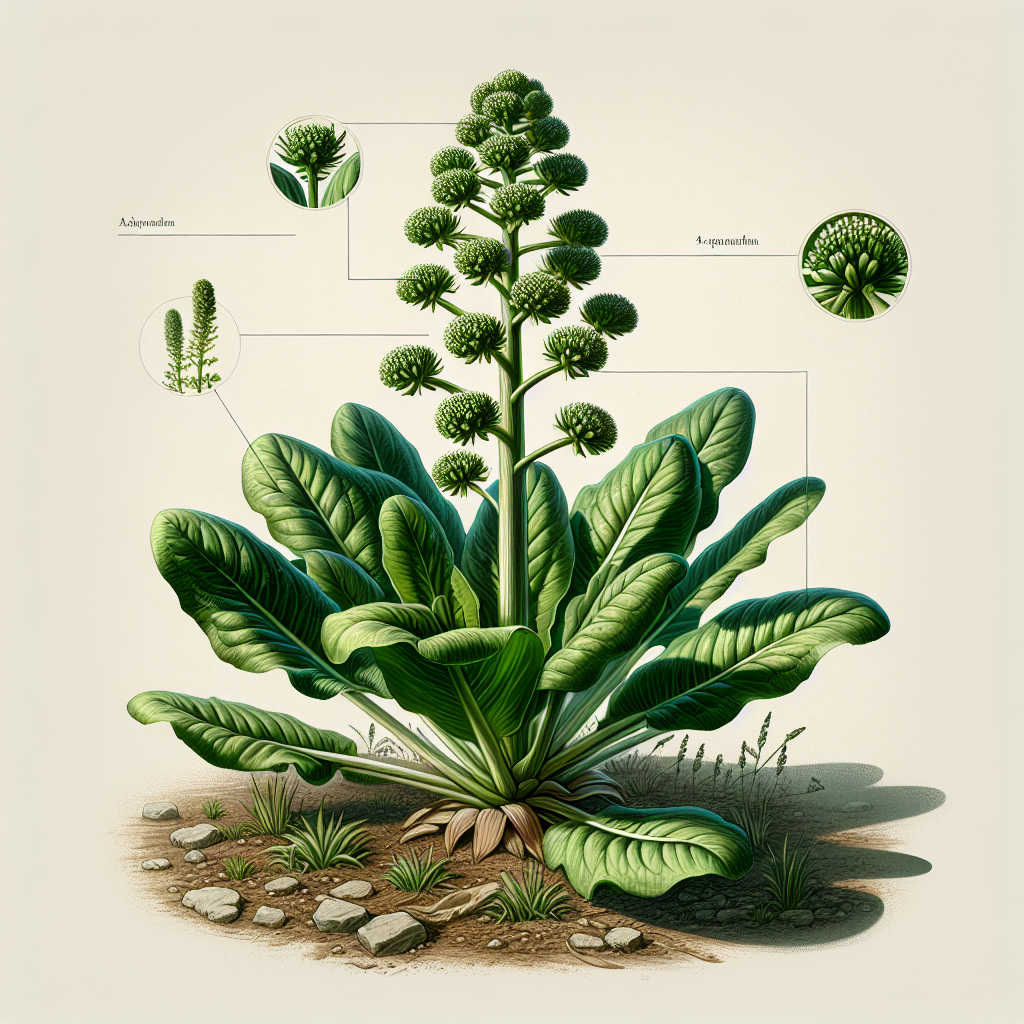Growing Pomegranates in Your Backyard
Updated April 20, 2024 at 9:58 am

Growing Pomegranates: A Comprehensive Guide
-
Pet Friendly:
Safe for pets, pomegranate trees pose no serious threats if ingested by curious cats or dogs.
Light Requirements:
Pomegranates thrive in full sun, needing at least 6 hours of direct sunlight per day.
Watering:
Regular watering during the first few years helps establish roots, then they are fairly drought-tolerant.
Humidity:
These trees can handle moderate humidity but thrive in drier conditions.
Temperature:
A warm climate is preferred, with temperatures ideally above 40°F to avoid frost damage.
Difficulty:
With some basic knowledge, growing pomegranates can be simple—moderate for new gardeners.
Selecting the Right Variety for Your Climate
Understanding the climate in your region is crucial when choosing a pomegranate variety to grow. Warmer regions can opt for ‘Wonderful’ which is known for its large, juicy fruits.
Those in slightly cooler climates might prefer ‘Granada’, a variety known for its early ripening, lessening the risk of frost damage. Always check the USDA zone compatibility when selecting your pomegranate tree.
Planting Your Pomegranate Tree
Spring is the ideal time to plant pomegranate trees. Choose a spot with well-draining soil and ample sunlight. Dig a hole twice the width of the root ball and just as deep.
When placing the tree in the hole, ensure the top of the root ball is level with the surrounding soil before backfilling. Press the soil down and water thoroughly to eliminate air pockets.
Watering and Mulching Techniques
Young trees need consistent watering. Create a watering schedule that allows the soil to dry out slightly between watering sessions but avoids it from becoming completely dry, especially in the heat of summer.
Mulching with organic material like straw or wood chips can assist in maintaining moisture levels and keeping weeds at bay.
Pruning and Training for Healthy Growth
Pruning is essential for a healthy pomegranate tree. In the first year, focus on removing dead or damaged limbs. As the tree matures, prune to enhance airflow and sunlight penetration, which promotes fruiting.
Establish a strong framework of branches, and don’t shy away from thinning out crowded areas.
Fertilizing for Optimum Nutrition
Fertilizing your tree can significantly impact its health and fruit production. In early spring, introduce a balanced fruit tree fertilizer to encourage robust growth.
Components like nitrogen, phosphorus, and potassium are critical. Consider organic options such as compost or well-rotted manure for a slow-release effect that benefits the tree long-term.
Pest and Disease Management
Pomegranate trees can be susceptible to pests like Aphids and diseases such as root rot. Implement proactive measures by regularly inspecting the tree and using neem oil or insecticidal soaps on identified pests.
Good airflow and avoiding overwatering can prevent the majority of fungal diseases. If you encounter persistent issues, consult a local nursery or extension service for advice specific to your region.
Harvesting and Enjoying Your Pomegranates
Fruit is typically ready for harvest in the fall when the skin is deep red and slightly cracked. Use pruning shears to snip the fruit, leaving a bit of the stem attached.
Once harvested, pomegranates can be eaten fresh, juiced, or used in a variety of culinary dishes. The antioxidant-rich arils or seeds are the edible part, bursting with flavor and nutrients.
Common Challenges and Solutions
If you’re noticing leaf yellowing, it could be a sign of overwatering or nutrient deficiencies. Adjust your watering schedule and consider a soil test to determine if additional fertilization is needed.
Cracking fruit can happen due to inconsistent watering. Aim for a more uniform watering regimen, especially as the fruits are developing.
Gardening Tools and Accessories for Growing Pomegranates
A high-quality pair of pruning shears is essential. The Fiskars Steel Bypass Pruning Shears are highly rated for their sharpness and durability, making them perfect for the precise cuts required in pomegranate maintenance.
Fiskars shears provide clean cuts, reducing the potential for disease, and have comfortable, ergonomic handles to make your gardening tasks a pleasure. If reviews are consistently positive, you might want to consider adding them to your toolkit.
Find This and More on Amazon
Understanding Soil pH and Amendments
Pomegranates prefer slightly acidic to neutral soil pH levels. A simple soil pH testing kit can help determine if you need to make adjustments. If your soil is too alkaline, adding sulfur can help lower the pH, while lime raises it if too acidic.
Consider amending the soil with organic matter like compost to improve soil structure and fertility. Composts such as the Charlie’s Compost are revered for their nutrient richness and ability to enhance soil health naturally.
Beneficial Companion Plants
Companion planting can benefit your pomegranate tree. Consider planting understorey plants like lavender or thyme, which can attract pollinators as well as repel pests with their strong scents.
Flowering annuals also invite beneficial insects that prey on common pests, creating a healthier environment for your pomegranate tree.
Irrigation Systems for Efficiency
Drip irrigation systems are a fantastic option for pomegranates, delivering water directly to the roots while conserving water. The Raindrip Drip Irrigation Kit is an excellent example of a user-friendly system adaptable to your specific garden layout.
Such systems can be automated with a timer, ensuring your tree gets a consistent amount of water even when you’re busy. Reviewers often appreciate the ease of installation and the long-term water savings these systems provide.
Find This and More on Amazon
Organic Mulches for Moisture and Weed Control
Choosing the right mulch is also an important part of pomegranate cultivation. Cedar mulch, for example, not only retains soil moisture and temperature but also repels certain pests due to its natural oils.
Organic mulches such as pine bark or straw decompose over time, improving soil quality and nutrient content, making them an excellent choice for the environmentally conscious gardener.
The Importance of Sunlight and Positioning
Positioning your pomegranate tree in a location that receives ample sunlight is key. The tree should be placed to avoid shading by buildings or other trees, as pomegranates need plenty of direct sunlight to bear the best fruits.
Consider the tree’s mature size when selecting a spot in your backyard. Ensure it has enough room to grow without being obstructed or causing obstruction to other plants or structures.
Dealing with Extreme Weather
While pomegranates are tolerant of drought once established, they can suffer during extreme weather. Young trees, particularly, need protection from frost and excessive heat.
Shade cloths can be used to protect trees from scorching heat while planting near a wall or using frost cloths can help mitigate cold damage.
Thinning Fruits for Better Harvests
To ensure that your pomegranate tree produces large, healthy fruits, it can be beneficial to thin the fruits in the early stages of development. This means removing some of the smaller or less healthy fruits.
Thinning out the fruits allows the tree to focus its energy on the remaining fruits, improving their size and quality. It’s a bit of extra work, but the payoff can be significant.
Seasonal Care and Maintenance Schedule
Having a seasonal care schedule can be invaluable. In spring, focus on fertilizing and watering new growth. Summer is the time for consistent watering, pest control, and possibly thinning fruits.
Autumn is harvesting season, followed by post-harvest pruning, while winter is about protection from cold and planning for the next season.
Engaging with a Gardening Community
Joining a local gardening club or online community can provide a wealth of knowledge and support for newbie pomegranate growers. Shared experiences with local growers can guide you on what works best in your area.
Such groups are also great for swapping varieties and getting your hands on different pomegranate cuttings that might be well-suited to your backyard’s unique conditions.
Making the Most of Your Harvest
When you have a bountiful harvest, knowing how to store and use your pomegranates is key. Fresh pomegranates have a good shelf life when kept in a cool, dry place but can also be refrigerated to extend their freshness.
Learning how to properly deseed pomegranates can save you time and make the fruits more enjoyable. Consider investing in a pomegranate deseeder tool such as the ‘Pomegranate DeSeeder Pro’, which simplifies the process and keeps the mess to a minimum.
Find This and More on Amazon
Understanding Propagation Techniques
Propagation by cuttings is a common method for expanding your pomegranate collection. Taking cuttings from healthy branches during the dormant season can yield new trees.
Make sure to use a rooting hormone and maintain appropriate moisture and temperature levels to ensure success. This can be a cost-effective and rewarding way to grow more trees.
Benefits of Homegrown Pomegranates
Growing your own pomegranates is not just about the harvest. The process can be therapeutic, and the trees themselves can be quite ornamental. These trees also provide habitat and food for local wildlife like birds.
Homegrown fruits are fresher, potentially organic, and you have control over the use of chemicals, making them healthier for your family and the environment.
Enhancing Garden Aesthetics with Pomegranates
Beyond the fruit, pomegranate trees offer aesthetic value to your garden. With their glossy leaves, bright flowers, and striking fruits, they can be focal points in the landscape design.
Consider including a pomegranate tree as part of an ornamental edible garden, which combines beauty with utility.
Education Resources for Aspiring Growers
For those looking to deepen their understanding of pomegranate cultivation, resources abound. Books like “Pomegranates: Ancient Roots to Modern Medicine” offer insights into both the horticulture and history of the fruit.
Additionally, agricultural extension services often provide detailed guides specific to growing pomegranates in your region, a highly valuable resource for localized information.
Cost Analysis: Is Growing Pomegranates Worth It?
To determine if growing pomegranates is worth the investment, consider the cost of trees, soil amendments, tools, and time. Compare this to the average price of organic pomegranates in stores.
In the long run, homegrown pomegranates can be cost-effective, especially when considering the higher price point of organic fruits and the yield a single tree can offer over its lifetime.
Supporting Local Nurseries and Agriculture
When starting your pomegranate journey, consider sourcing your tree from a local nursery. Not only are you likely to find a variety suited to your area, but you’re also supporting local businesses and agriculture.
Speak with the experts at these nurseries who can provide tailored advice and help troubleshoot any initial issues you might face.
Encouraging Eco-Friendly Practices
Growing pomegranates offers an opportunity to engage in eco-friendly practices such as composting, using natural pest management techniques, and water conservation through mulching and drip irrigation.
These practices not only benefit your pomegranate tree but also contribute to the overall health of your backyard ecosystem.
Maximizing Space with Vertical Gardening
If space is limited in your backyard, vertical gardening techniques can be a game-changer for growing pomegranates. Trellising can support the growth of pomegranate trees, allowing the branches to spread upwards rather than outwards.
Vertical gardening can also decrease the likelihood of disease by improving air circulation around the tree. Just make sure the structure is sturdy enough to support the mature weight of the tree and its fruits.
Personalized Care for Your Pomegranate Tree
Like any plant, pomegranates have their own set of needs that, when met, can lead to bountiful harvests. Paying attention to your tree’s signals, such as leaf color and fruit development, can help you provide the personalized care it requires.
Tweaking watering schedules, adjusting fertilization, and taking notes on your plant’s performance year after year will enable you to become an expert on your specific tree.
The Joy of Sharing Your Bounty
One of the perks of growing pomegranates is the ability to share them with friends, family, and even neighbors. The fruit’s attractive appearance and delicious taste make it a delightful and appreciated gift.
Sharing your harvest not only spreads joy but can also encourage others to start their own gardening adventures. It’s a rewarding way to foster community connections and inspire a love for home gardening.
Reflecting on the Pomegranate Season
At the end of the growing season, it’s important to reflect on what worked well and what could be improved. Keep a gardening journal to document your observations, successes, and lessons learned through the season.
This reflection will not only prepare you for the next season but also help you appreciate the journey and dedication it takes to grow pomegranates from the comfort of your backyard.
Shop more on Amazon

